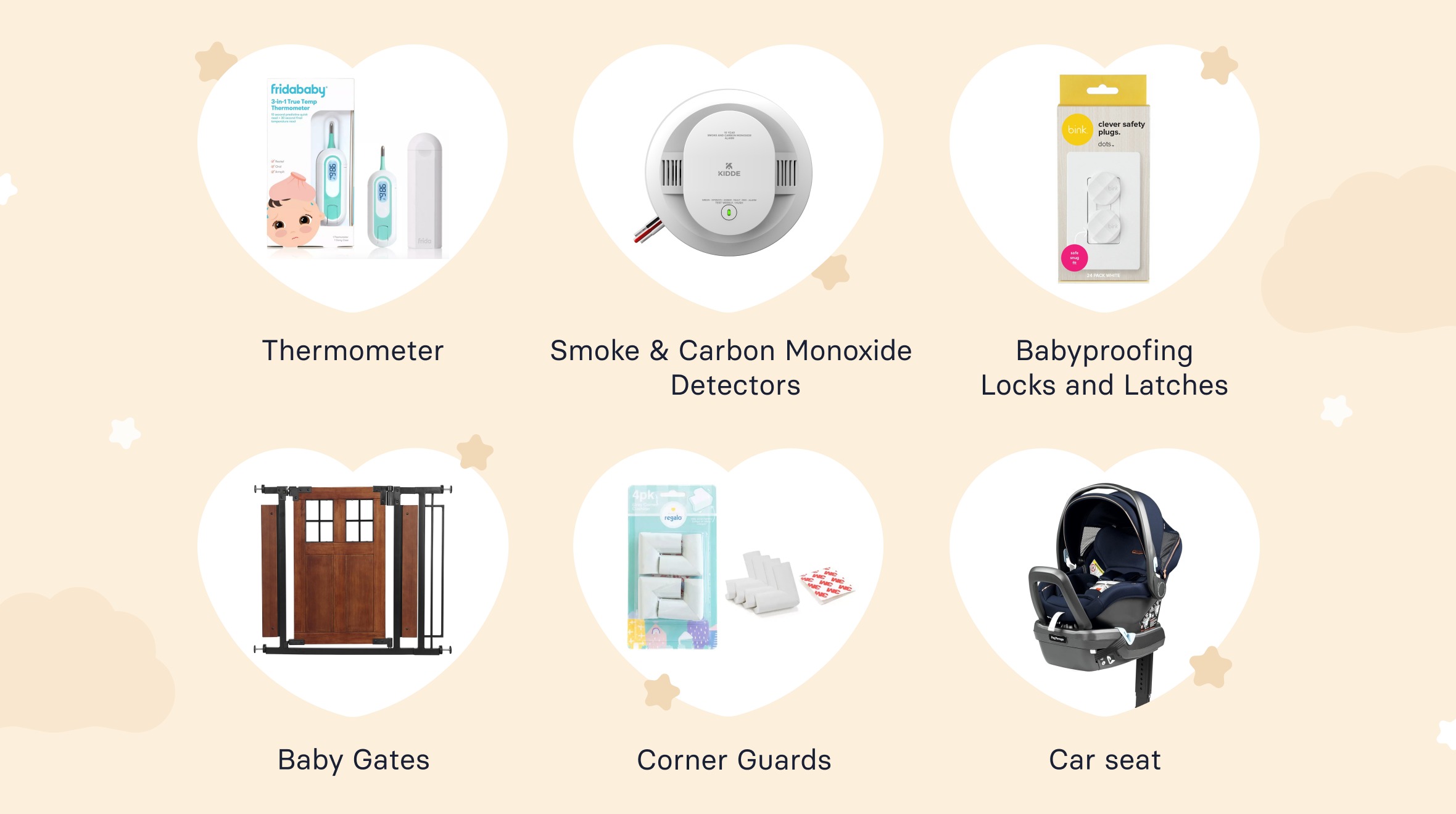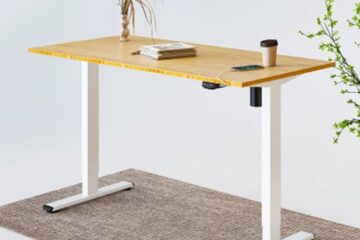Picture this: Your six-month-old just learned to crawl. One moment they’re playing quietly with toys, and the next, they’re racing toward the stairs or reaching for that decorative vase you forgot was within reach. It happens faster than you think. This is why babyproofing your home is one of the most important tasks for new parents. It’s not about creating a bubble around your child. It’s about making your home a safe place where they can explore and grow without constant worry. In this guide, we’ll walk you through everything you need to know to protect your little one from common household dangers.
When Should You Start Babyproofing Your Home?
Many new parents wonder when the right time is to start making their home baby-safe. The answer is simpler than you might think.
Before Baby Arrives
The best time to begin is before your baby comes home. While you’re pregnant and have more time, you can set up the nursery safely and tackle basic preparations. This means securing heavy furniture, installing smoke detectors, and making sure the crib meets current safety standards. You won’t feel rushed, and you’ll have one less thing to worry about after the baby arrives.
As Your Baby Grows
Babyproofing isn’t a one-time task. Your needs will change as your baby develops new skills. Newborns stay where you put them, so your focus is mainly on safe sleep and basic room setup. But around six to ten months, most babies start crawling. This is when you need to get serious about floor-level hazards. By their first birthday, many babies are walking and climbing. That means higher shelves and counters are suddenly in reach. You’ll need to reassess your home every few months as your child grows.
How to Get Started: See Your Home Through Baby’s Eyes
The best way to spot dangers is to see your home the way your baby does. Get down on your hands and knees and crawl through each room. You’ll be amazed at what you notice from this angle. That exposed outlet behind the couch? The small toy wedged under the coffee table? The dangling cords from the window blinds? These are all things you might miss from adult height.
Take a room-by-room approach. This keeps the task manageable and ensures you don’t overlook anything. Professional Babyproofing services can also help you identify risks you might miss, offering expert guidance on making every corner of your home safe for your growing child.
Look for small objects that could be choking hazards, sharp corners at head level, and anything that could tip over if pulled. Make a list as you go. This gives you a clear action plan for what needs fixing.
Room-by-Room Babyproofing Guide
Let’s break down the specific safety measures you need in each area of your home.
Nursery Safety Essentials
The nursery is where your baby spends a lot of time, especially during their first year. Start with the crib. It should have a firm mattress that fits snugly with no gaps around the edges. Keep the crib empty—no pillows, blankets, stuffed animals, or bumper pads. These can cause suffocation.
Anchor all heavy furniture to the walls. Dressers, bookshelves, and changing tables can tip over if a curious toddler tries to climb them. Use furniture straps or L-brackets to secure them properly.
Window cords are a strangulation hazard. Cut looped cords or install cord wraps to keep them out of reach. Better yet, consider cordless blinds for the nursery.
Keep anything you need within your reach but out of baby’s. This means diaper creams, lotions, and any small items should be stored up high or in locked drawers.
Kitchen Babyproofing
The kitchen is full of dangers, from hot stoves to toxic cleaning products. Install safety locks on all low cabinets and drawers, especially those containing cleaning supplies, plastic bags, or sharp objects. Stove knob covers prevent curious hands from turning on burners. Some parents remove the knobs entirely when not cooking.
Lock your oven door and keep appliance cords tucked away. A child can pull a slow cooker or coffee maker down on themselves if the cord is dangling.
Store all chemicals, including dish soap and dishwasher pods, in high cabinets or locked storage. These products are bright and colorful, making them tempting to young children.
Living Room Protection
The living room is where families spend most of their time together, so it needs careful attention. Secure your TV and any heavy furniture to the wall. Flat-screen TVs are a major tipping hazard. Use corner and edge protectors on coffee tables, fireplace hearths, and other furniture with sharp edges. A toddler learning to walk will fall often, and these protectors can prevent serious injuries.
Cover all electrical outlets with safety covers or install outlet plates that close automatically. Manage cords from lamps, electronics, and chargers. Tape them to walls or use cord shorteners to keep them out of reach.
If you have a fireplace, install a safety gate around it. The surface stays hot long after the fire goes out.
Bathroom Safety Measures
Bathrooms contain many hazards in a small space. Install locks on toilet lids. Babies can drown in just a few inches of water, and toilet water also contains bacteria. Lock all cabinets containing medicines, razors, hair dryers, and cleaning products. Even natural products can be harmful if ingested.
Set your water heater to 120 degrees Fahrenheit or lower. This prevents scalding burns during bath time. Use non-slip bath mats both inside and outside the tub to prevent falls.
Never leave a baby alone in the bathroom, even for a second. Drowning happens silently and quickly.
Essential Babyproofing Products Every Parent Needs
You don’t need to buy everything on the market, but certain products are truly essential. Safety gates are crucial for blocking stairs, doorways, and rooms you want to keep off-limits. Look for hardware-mounted gates at the top of stairs, as pressure-mounted ones can be pushed over.
Furniture anchors and straps prevent tipping accidents. These are inexpensive but can save lives. Outlet covers are cheap and easy to install. Get more than you think you need. Cabinet locks come in different styles—magnetic locks, sliding locks, and adhesive locks. Choose what works best for your cabinets.
Corner and edge protectors cushion sharp furniture edges. They come in clear or colored options. Door stoppers and door holders prevent pinched fingers and keep doors from slamming.
Important Safety Checks Beyond the Basics
Some safety measures go beyond physical babyproofing. Install smoke detectors on every floor of your home and in sleeping areas. Test them monthly and change batteries twice a year. Carbon monoxide detectors are equally important, especially if you have gas appliances.
Learn about choking hazards. Anything that fits through a toilet paper tube is too small for babies under three. Common items like coins, buttons, batteries, and small toy parts pose serious risks.
Don’t forget about items that adults bring into the home. Visitor purses often contain medications, gum, or other hazards. Ask guests to keep bags out of reach. Pet supplies like food bowls, litter boxes, and toys also need attention.
Common Babyproofing Mistakes to Avoid
Many parents wait until after their baby starts crawling to begin babyproofing. By then, you’re chasing a mobile baby while trying to install safety products. Start early to stay ahead.
Another mistake is only checking at adult eye level. Remember to get down low and look from your baby’s perspective. Parents also forget to reassess as their child grows. What works for a crawler won’t necessarily protect a climber.
Don’t overlook temporary hazards. When you have guests, their belongings might contain dangers. Holiday decorations, visiting family medications, and seasonal items need attention too.
Conclusion
Babyproofing your home protects your child and gives you peace of mind. It lets your baby explore safely while learning about their world. Take it one room at a time. You don’t have to do everything in one day. As your baby grows and develops new abilities, you’ll adjust your approach. Remember, the goal isn’t perfection. No home can be 100% risk-free. The goal is to remove the most serious hazards and create a safer environment. Your efforts today will pay off in fewer worries and more joy as you watch your little one discover their surroundings. Start now, stay alert, and enjoy this amazing journey of parenthood.



